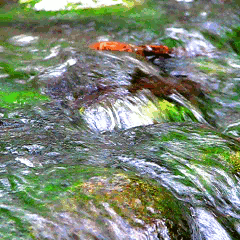French Creek is renowned as one of the most important streams in eastern North America: one that is rich in biological diversity and has outstanding water quality. The Nature Conservancy has identified French Creek as a globally significant watershed, listing it as “one of the last great places in the United States.”

Geography of French Creek
French Creek begins in southwestern New York and winds southward for 117 miles through the Pennsylvania counties of Erie, Crawford, Mercer and Venango. Joining with the Allegheny River in Franklin, Pennsylvania, French Creek is part of the Mississippi drainage rather than the eastern, Susquehanna River watershed. The French Creek watershed encompasses 1,270 square miles and includes major tributaries such as Cussewago Creek west of Meadville and Sugar Creek east of Franklin. En route to the Allegheny River, French Creek flows past undisturbed natural lands, farms, small cities and towns, industrial and commercial areas, and second-home developments. This is a largely rural watershed.
Rich in History
French Creek holds a special place in American history. It served as a key north-south route for the ancient Mound Builder tribes and then the Haudenosaunee (Iroquois) tribe. It was a strategic waterway for the British and French in the 1750s in their struggle to gain possession of the Mississippi Valley and North American territories to the west. In 1753 George Washington visited the region to assess strength of the French forces at Fort LeBoeuf. The French Creek region remained a battleground throughout the French and Indian War and the American Revolution. For the next century, French Creek remained a vital transportation route within northwestern Pennsylvania, moving goods between Lake Erie and the Allegheny River
Rich in Biological Diversity
Experts recognize French Creek as one of the most significant natural resources in Pennsylvania and eastern North America because of the variety of plants and animals the stream hosts. More types of fishes and mollusks are found there than in any other stream in the state. The stream contains over 70 species of fish and 25 species of mollusks, several of which are endangered in the state and in the nation. Fourteen of the creek’s fish species are darters , including the rare eastern sand darter which was rediscovered in 1991. Freshwater mussels are valuable indicators of water quality. Research indicates that 25 mollusk species still inhabit the French Creek watershed and only one species has been lost compared to historical records. Seven of these mussels are now found almost nowhere else in the state.
Unusual Geology
The biological diversity and water quality in French Creek stem in part from the stream’s geologic history. Before glaciers covered most of northwestern Pennsylvania, French Creek flowed north into the Lake Erie/St. Lawrence River system. The stream therefore contains fauna indigenous to that system. Glacial erosion and deposition altered the watershed and redirected the French Creek to join the Allegheny River, enabling the migration of southern fauna into the present ecosystem. Glaciation is also responsible for tremendous groundwater resources that provide year-round flow to French Creek and its tributaries. Glacial sediments in the watershed contain abundant calcium carbonate (e.g., limestone) that effectively buffers streams from the highly acidic precipitation that characterizes the region.
An Ecological Benchmark
French Creek is remarkably unpolluted as compared to the other tributaries of the Ohio River drainages, which have been impacted by intensive row-crop agriculture. Most streams of comparable size in Ohio, Indiana and Illinois have lost many native invertebrates and fishes because of siltation and nutrient enrichment from agricultural runoff, and because of channel alterations (channelization). By virtue of the low population density and less row-crop farming in western Pennsylvania, French Creek has sustained less of an impact, and thus retains surprisingly diverse fauna, comparable to the diversity found in these other streams before Europeans arrived. Thus, French Creek can serve as a benchmark for assessing human impact and for measuring the success of restoration programs for streams throughout the Ohio River drainage.
Threats to French Creek
The threats to the biological diversity and good water quality can be attributed to human interaction with the environment. Non-point source pollution (pollution entering the stream from no specific location) includes runoff of fertilizers and pesticides from agricultural fields and lawns. Animal waste from pastures or from cows entering the stream are adding to the unnatural nutrient enrichment of the water. Excessive nutrient levels can cause algal blooms, which eventually die and use up oxygen in the process of decomposition. Road salts and sediment from dirt roads also affect the water quality in the area. Another problem in the watershed is the lack of riparian buffer zones (streamside forests) along some creek sections. Riparian zones help to trap sediment and nutrient runoff from agricultural fields, thus keeping them from reaching the stream. Point source pollution (pollutants entering from a specific spot) includes failing sewage treatment plants and home septic systems and some industrial activity.